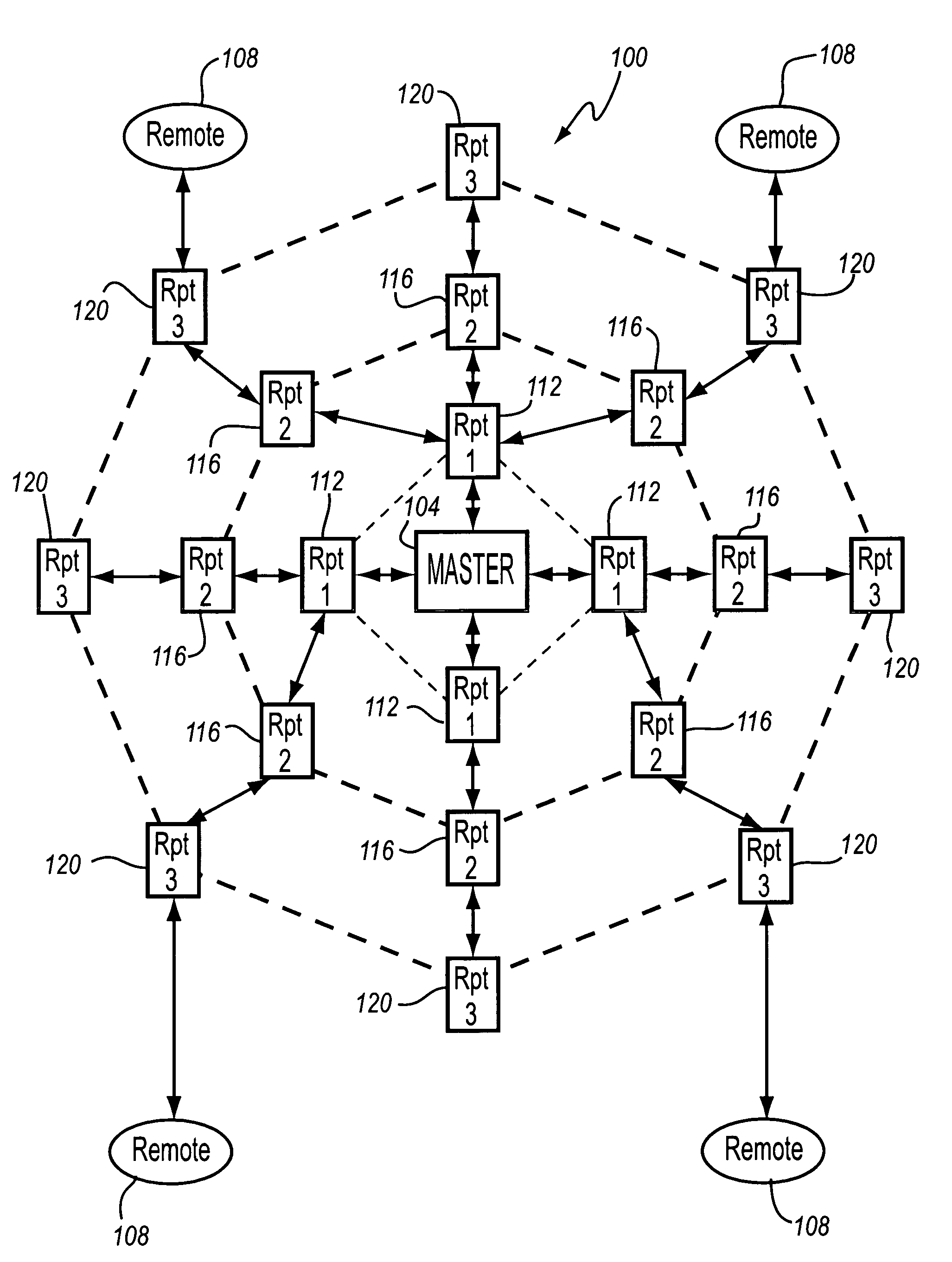Message control protocol in a communications network having repeaters
a communication network and message control technology, applied in the field of communication, can solve the problems of inability to control the message control protocol of the communication network having the repeater, the inability to re-broadcast redundantly, and the inability to configure the wireless communication network. the effect of inefficiency
- Summary
- Abstract
- Description
- Claims
- Application Information
AI Technical Summary
Benefits of technology
Problems solved by technology
Method used
Image
Examples
Embodiment Construction
[0034]Referring now to FIG. 3, a block diagram illustration of a portion of a wireless communication network 200 of the present invention is described. In its simplest form, the wireless communication network 200 includes a master 204, a repeater 208, and a remote device 212. It will be understood that the wireless communication network 200 may contain a number of repeaters 208 and remote devices 212. Furthermore, multiple repeaters 208 may be required for the master 204 to communicate with a remote device 212, in a similar fashion as described above with respect to FIGS. 1 and 2. In such a case, the repeaters 208 are assigned layer numbers, and transmit messages to repeaters 208 having a lower layer number, for inbound messages to the master 204, or to repeaters 208 having a higher layer number, for outbound messages away from the master 204.
[0035]The master 204 includes a processor 216, a memory 220, and a transceiver 224. The processor 216 controls communication to and from the m...
PUM
 Login to View More
Login to View More Abstract
Description
Claims
Application Information
 Login to View More
Login to View More - R&D
- Intellectual Property
- Life Sciences
- Materials
- Tech Scout
- Unparalleled Data Quality
- Higher Quality Content
- 60% Fewer Hallucinations
Browse by: Latest US Patents, China's latest patents, Technical Efficacy Thesaurus, Application Domain, Technology Topic, Popular Technical Reports.
© 2025 PatSnap. All rights reserved.Legal|Privacy policy|Modern Slavery Act Transparency Statement|Sitemap|About US| Contact US: help@patsnap.com



